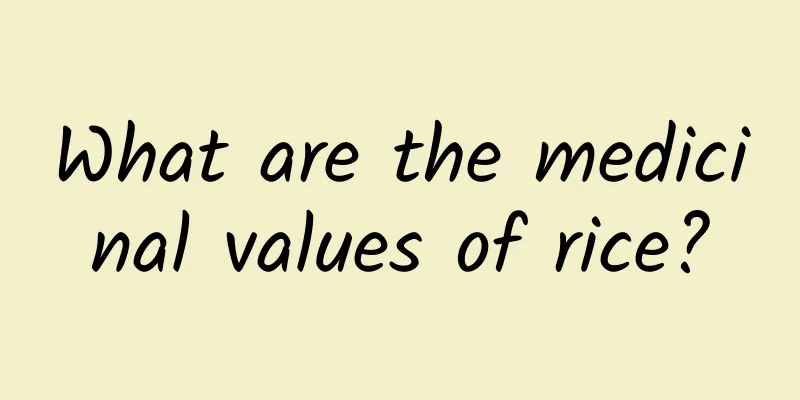What are the medicinal values of rice?

|
I believe that rice, as one of our staple foods in daily life, plays a decisive role in supplementing the nutrition of our body. As the saying goes, man is iron and rice is steel, from this we can see the importance of rice to our body. In fact, many experienced friends know that in addition to being eaten as our staple food, rice also has many medicinal values. So what are the medicinal values of rice? Please discuss this with me in the following time. Rice contains about 75% carbohydrates, 7%-8% protein, 1.3%-1.8% fat, and is rich in B vitamins. The carbohydrates in rice are mainly starch, and the protein it contains is mainly glutenin, followed by rice gelatin and globulin. The biological value and amino acid composition ratio of its protein are higher than those of cereal crops such as wheat, barley, millet and corn. The digestibility is 66.8%-83.1%, which is also one of the higher ones among cereal proteins. Therefore, edible rice has higher nutritional value. However, the content of lysine and threonine in rice protein is relatively low, so it is not a complete protein and its nutritional value is not as good as animal protein. But eating rice for lunch and dinner is more conducive to people losing weight than eating pasta. In southern my country, people generally eat rice as their staple food, but it is very different in the north. The fat content in rice is very low. The fat in rice grains is mainly concentrated in the rice bran. The linoleic acid content in the fat is relatively high, generally accounting for 34% of all fat, which is 2-5 times more than rapeseed oil and tea oil. Therefore, edible rice bran oil has better physiological functions. Rice therapeutic effects: Traditional Chinese medicine believes that rice is sweet and mild in nature, and has the effects of tonifying the middle and replenishing Qi, strengthening the spleen and stomach, improving the essence and strengthening the will, harmonizing the five internal organs, unblocking blood vessels, improving hearing and eyesight, relieving restlessness, quenching thirst, and stopping diarrhea. It is known as the "first of the five grains" and is China's main grain crop, accounting for about a quarter of the cultivated area of grain crops. The above paragraphs have given us a good introduction to the medicinal value of rice. I believe that friends who have read the above content carefully will like rice more and become more proficient and experienced in using rice. In this way, when we suffer from some diseases, we can better achieve the effect of relief. Therefore, today’s content is worth learning better. |
<<: What are the medicinal values of garlic?
>>: What are the medicinal values of barley worms?
Recommend
What is borneol?
Borneol, also known as borneol, is a widely used ...
Thanos: I will destroy this universe! Physics: No, you can't.
Written by Skin Want to set an extraordinary spor...
Today's prosperity is what you wish for! Tribute to the older generation of aerospace people
As the bright Chinese space station passed throug...
The efficacy and function of Shrimp Orchid
Since Chinese medicine has fewer side effects, mo...
The efficacy and function of eucalyptus truncatula
Traditional Chinese medicine has a history of tho...
What? It can prevent myopia. Go out for a walk!
Audit expert: Liu Dongbao Chief Physician of Opht...
The efficacy and function of Zouma Fetal Leaf
The leaves of Zoumatai are a famous traditional a...
The efficacy and function of water hyacinth
Water hyacinth is a famous traditional and common...
The efficacy and function of juniper fruit
Many people choose juniper fruit because of its h...
The efficacy and function of red acid seven
Red sour seven is a traditional Chinese medicine....
Are you constipated? What should you do?
Did you poop today? In addition to having common ...
Some spinach tastes delicious while others taste astringent. Why is that?
When it comes to the animation "Popeye"...
Hazelight: It Takes Two has sold over 23 million copies, of which about 11.5 million are from the Chinese market
Recently, Josef Fares, founder of Hazelight Studio...
If an electric car is not used for a long time, the battery will "starve to death"?
Audit Expert: Wang Jinlu, Director of Power Suppl...









